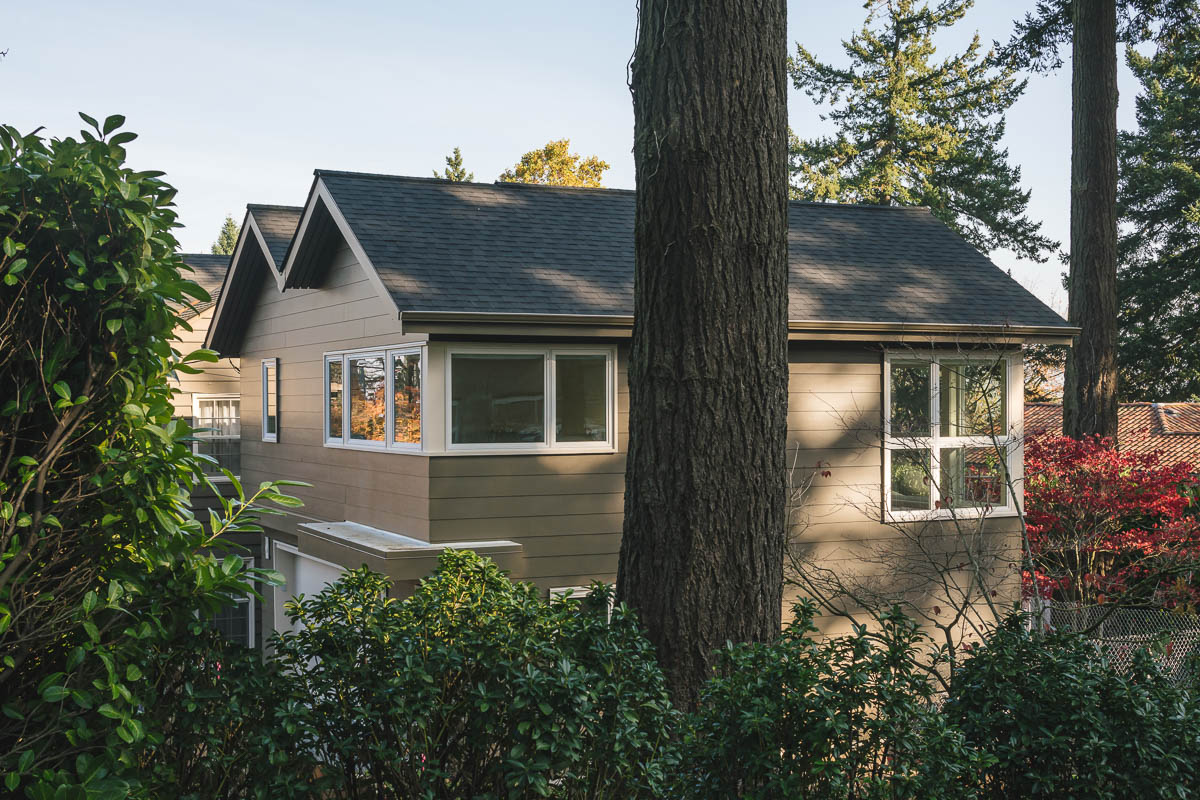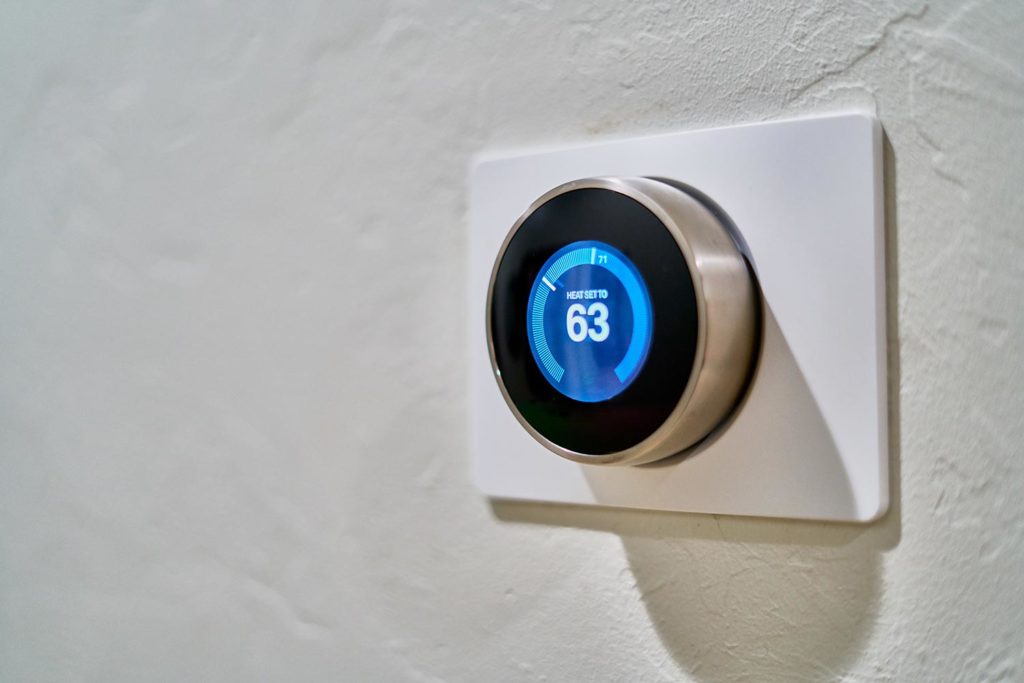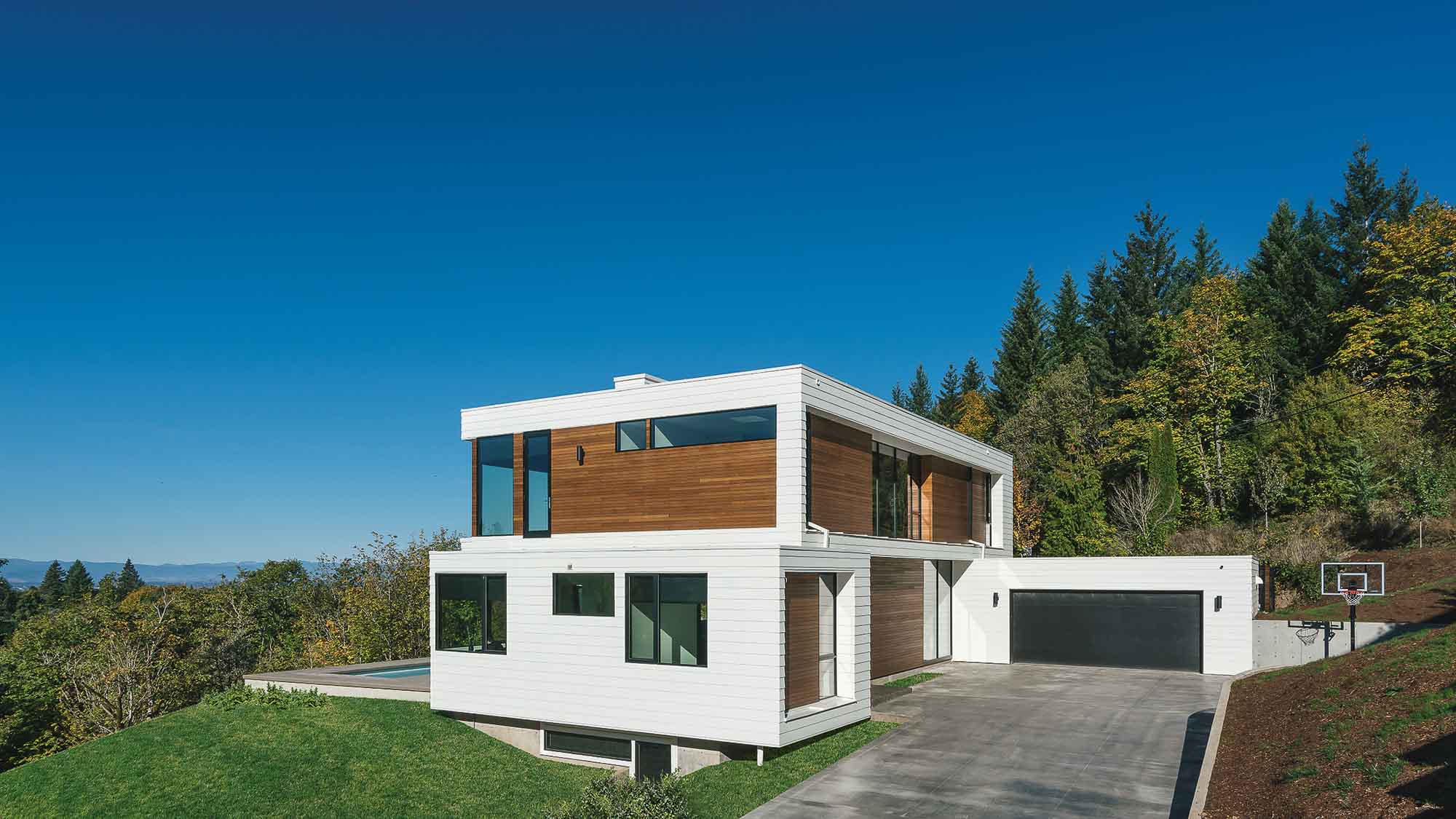An energy-efficient home…
- Provides a higher level of comfort
- Is better for the environment
- Saves you money through reduced energy use (and potentially tax credits)
- Increases your home’s resale value
What’s not to love? If you’re getting ready to build a custom home and you’re wondering how to make your new home more energy efficient, here’s what you need to know.
What makes a home energy efficient?
An energy-efficient home construction project requires a holistic approach. Many different factors affect how energy efficient a custom home ultimately is, including:
- Location and landscaping
- Insulation
- Space heating and cooling
- Lighting
- Water heating
- Windows, doors, and skylights
With all these factors in mind, here are some energy-efficient home ideas and tips to help you plan the custom home you’ve always wanted:
Choose your site carefully
The climate and geography of your home’s location will determine its needs for lighting, heating, and cooling. People often ask which direction a home should face to reduce energy consumption.

Conventional wisdom says that, in the Northern Hemisphere, south-facing homes typically get more sun at the front of the house for most of the day, which makes them naturally brighter and warmer. A north-facing home is likely to have darker and cooler main living spaces, since it will get more sun at the back of the house.
The truth is, it’s often more complicated than that. Is your home on the side of a hill? That will affect sun and wind exposure at different times of day, so you’ll want to take into account which rooms will get sun at which hours when planning your home’s orientation and layout. Also consider other nearby elements, including large trees and adjacent buildings.
It starts with an energy-efficient building envelope
Your building envelope is its barrier against the outside world. An energy-efficient building envelope is one that’s not “leaky” — in other words, it effectively contains indoor temperature and humidity levels no matter what the climate is like outside.

Let’s say it’s a cold January night and you turn the heat on. If your home has a weak building envelope, all that warm air will escape outside, and cold air will continue to get in. Meanwhile, your home will keep consuming energy trying to heat itself. A home with a good building envelope has a tighter seal. It will quickly heat itself to the temperature you want and stay warm much longer before the heating system has to kick in again. The same principle applies to air conditioning in July.
What affects your home’s building envelope?
Your home’s walls, windows, skylights, doors, roof, and foundation all affect its building envelope.
Choosing high-quality products and materials will help ensure that you control how much heat is gained and lost through these parts of your home. Well-insulated walls and foundation go a long way, as do double-paned windows.
One option is a cool roof, which is designed to reflect more sunlight and absorb less heat. This ultimately reduces your energy bills, benefits the environment, and keeps your home cooler in summer.
Heating, cooling, and ventilation
Did you know that heating is the most energy-intensive system in your home? It usually makes up about 42% of a home’s utility bill. Choosing ENERGY STAR certified heating and cooling products can cut down on energy use and costs. A smart thermostat can really help too.

Passive solar heating is another method that, given the right circumstances, can reduce or eliminate the need for other heating systems. It’s a complicated and multifaceted approach that involves using windows and other materials to collect, store, and distribute heat from the sun in your home. These materials can also cool your home in the summer by absorbing indoor heat.
Ventilation is important for any home, but a home with an extra energy-efficient building envelope may need a more sophisticated ventilation system.
Lighting
Using energy-efficient light bulbs is one of the easiest solutions, but an even more efficient strategy is to maximize your home’s use of natural daylight with a large number of strategically oriented windows. Also look for good quality shades, blinds, and curtains so you can control the amount of incoming light (and heat) at different times of day.

You might also consider whether a solar electric system (solar panels) would work for your home. It depends on factors like:
- Your electricity needs
- The size of your roof
- How much sun your roof gets and whether it’s blocked by trees
- HOA restrictions
Water heating
Traditional storage water heaters are usually not the most energy-efficient option because they keep your water hot even when you’re not using it. But the right water heater for your home will depend on its fuel or energy source and how much water you typically use.

Here are some potentially energy-saving (and money-saving) options to consider:
- Tankless water heaters provide hot water only as needed without storing it.
- Heat pump water heaters use electricity to move heat from one spot to another instead of generating heat directly.
- Solar water heaters use the sun’s heat (which is free) to provide hot water.
- Tankless coil and indirect water heaters use your home’s space heating system.
Using low-flow fixtures and energy-efficient appliances will help reduce your total use of hot water too.
Ready to build your energy-efficient dream home?
At Hamish Murray Construction, we are custom home builders in Portland, Oregon. Not only do we love building energy-efficient custom homes, but we also go the extra mile to use sustainable construction methods. So if your home’s environmental impact is important to you, you can rest assured that we’re doing everything we can to be environmentally friendly as we bring your vision to life.
In addition to sustainability, we also focus on flexibility, architectural integrity, and careful planning. Every detail of your new home deserves our care and attention!
Get in touch today to discuss your project.

